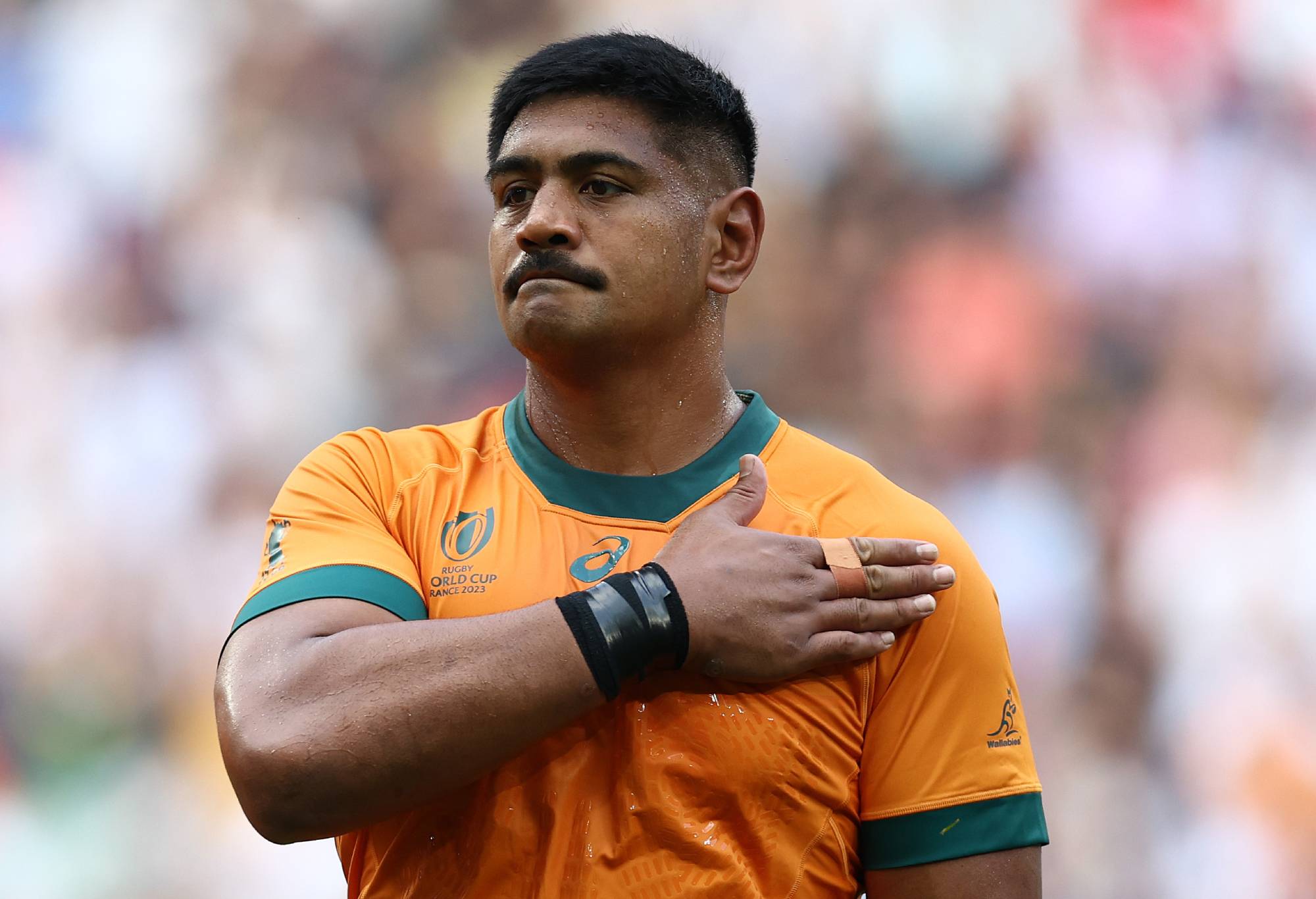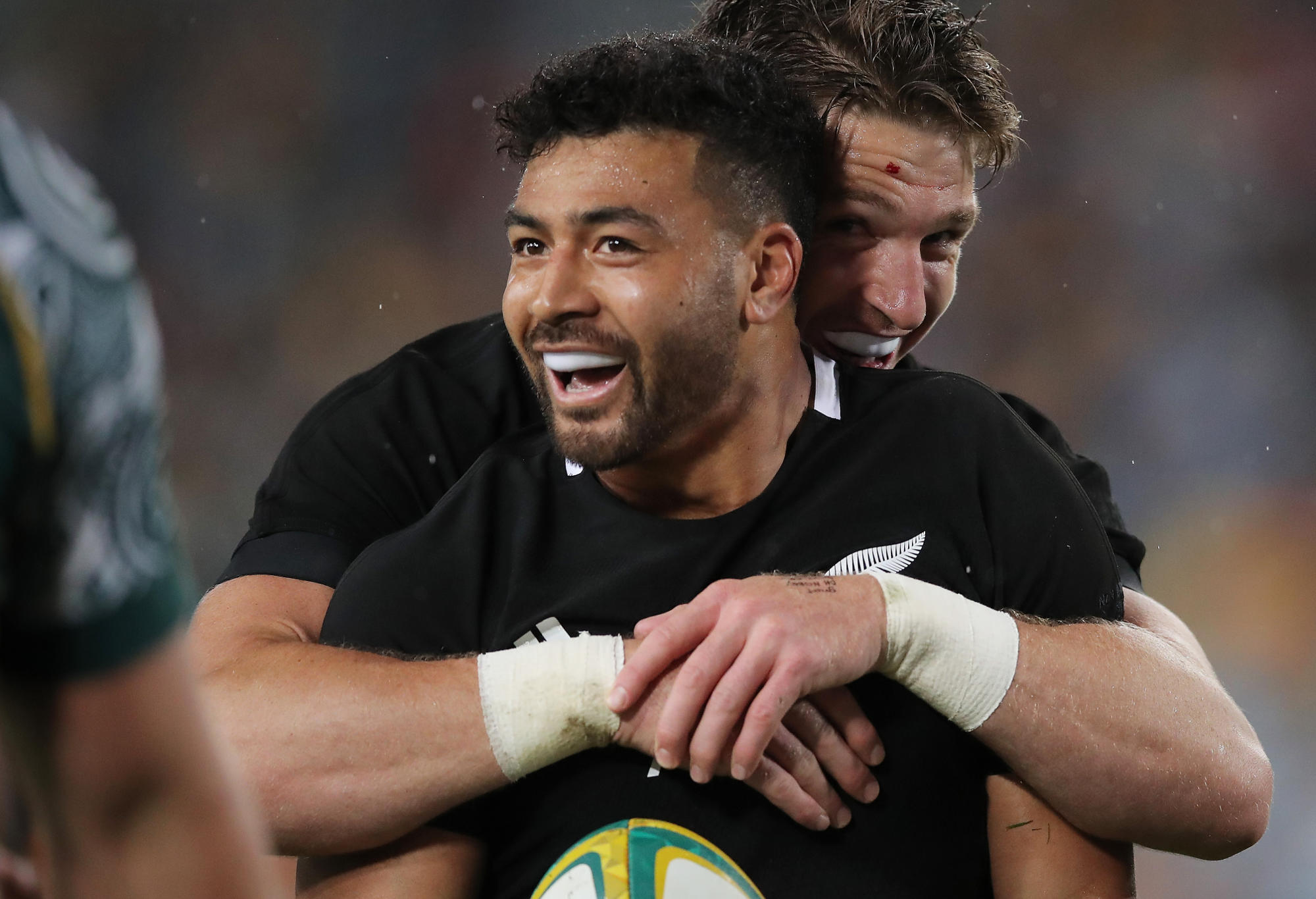A coach of the fabled Notre Dame gridiron team was once asked about secret of his team’s success. “Prayers work best when players are big,” he replied.
After observing the exciting opening round of the 2023 Rugby World Cup tournament, I would add a clarification to this comment: “Big players need to play big while small players can play big by leading their team with ultra smart rugby.”
We saw a splendid example of a big player (finally) playing big with Will Skelton, a 120 kg – 203cm giant, turning in a massive performance for the Wallabies in their commanding 35-15 victory over Georgia.
The fearsome Georgia pack, with their pirate beards, swelling bellies and tree trunk legs, lost their usual swagger and were reduced to a bewildered gang arguing with each other by Skelton’s frequent power plays.
The captain of the Wallabies was helped in this demolition job on the Georgia pack by powerful and athletic play from Taniela Tupou, the 140kg prop, and coach Eddie Jones’ golden discovery, Tom Hooper, a 122kg – 199cm flanker who plays like Owen Finegan of blessed RWC 1999 memory.
News Corp’s Jamie Pandaram headed his article on Skelton’s sensational performance: “Giant leap for Wallabies skipper who’s proving his weight in gold.”

Will Skelton. (Photo by Chris Hyde/Getty Images)
The article pointed out that when Skelton was playing at 145kg as a younger player he could not make the starting lineup of the Waratahs. It is not enough, in other words, to be big. A big rugby player has to actually play big.
This playing big attitude started for Skelton when he was released to Saracens, the English rugby club closest to the Crusaders in their preparation of their players. Skelton reduced his weight under extensive training to 130kg, still presenting as a massive presence. He was taught how to manipulate his size by mastering the technical aspects of tight forward play.
Against Georgia, Skelton was a force of nature. He smashed Georgia’s rolling maul. He made powerful runs that dented Georgia’s defensive line. He won turnover ball. And in one of the last lineouts of the match, he jumped easily to win a lineout, a skill that many pundits believed he did not have in his arsenal.
Pandaram also made the interesting point that “World Cups have been defined by forwards who rise to a level that seems unbelievable.”
He cited Pieter-Steph du Toit in 2019, Kieran Read in 2015, Jerome Kaino and Thierry Dusautoir in 2011 and Victor Matfield in 2007 as RWC dominators. “Skelton can sit among these kings,” Pandaram wrote.
The small man playing big syndrome was illustrated by George Ford who drove England to an unlikely and very comfortable victory over the Pumas 27 10. The victory and its margin was unlikely because for 70 minutes or so England played with a 14-man side against their opponents 15.
RWC tournaments have seen many brilliant performances by number 10s, the likes of Grant Fox, Michael Lynagh, Joel Stransky, Stephen Larkham, Jonny Wilkinson and Dan Carter.
But Ford’s performance was, in my opinion, the biggest big game any No.10 has played in a RWC tournament.

George Ford. (Photo by Jean Catuffe/Getty Images)
England were a team that had won only four out of their previous 13 Tests and among the losses was a defeat handed out to them by the Pumas at Twickenham last November and to Fiji only a few weeks ago.
But Ford in a remarkable sequence of skill, intuition and execution played the Pumas out of the game and possibly out of the RWC tournament.
He booted over three dropped goals and then six other penalties to boost a pack of Dad’s Army veterans to master a tough Pumas pack into errors and then submission.
It was Ford’s big man thinking that he was determined to win the game as the playmaker and points-scorer rather than try not to lose it that thrilled me. As he told reporters after the match: “We were a man down early and we had to take points when we gained field position.”
The clarity of the drop-kicking option lay in the fact it didn’t matter that England were a man down. He needed the ball somewhere within kicking distance and enough forwards to form a sort of block on charging Pumas. His technique was deadly under pressure and distance from the goal posts for all his kicks.
England’s coaching staff have a real dilemma on their hands now. The England backline with Ford and Manu Tuilagi at number 10 and inside centre worked so well on attack and defence that the position of the suspended England captain Owen Farrell becomes an issue for England when he can return from suspension after the next match.
There is no way that Ford could have performed his rescue act for England with Farrell at inside centre and sharing the playmaker role.
If there needs to be further proof that the two playmaker system does not work, we need to look no further than the All Blacks and their loss to France in the opening match of the 2023 RWC tournament.
The media has pointed out that this is the first time the All Blacks have lost a match in the pool stages of the tournament. As the Springboks proved in winning the RWC 2019 tournament, teams or one team at least since the tournament started in 1987 can win after losing in the pool round.
But what has not really been acknowledged is that 27-13 scoreline was the worst ever inflicted on the All Blacks in the history of the RWC tournament.
It is obvious now, or should be, that the All Blacks’ selector coaches have made a massive mistake in not entrusting the team four years ago to the playmaking leadership of Richie Mo’unga, the way previous RWC-winning All Black sides were entrusted to one playmaker, mainly Grant Fox in 1987 and Dan Carter in 2011 and 2015.
In the match against France, Barrett seemed to play in the line more than Mo’unga who was camped at fullback for long periods of play. The effect of this meant that there was no consistent method in the way the All Blacks tried to counter the France’s arrow-like rush defence.
Mo’unga’s skill is running the game, in the line, with the occasional searing break of his own. All the time. He needs to have his hands on the ball most of the plays calling them from virtually every set piece, ruck and maul.

(Photo by Matt King/Getty Images)
This is elementary 101 playmaking theory. All Blacks coach Ian Foster, a former No.10 himself, should know this.
He should also know that Beauden Barrett, one of the great players of his era, is a shadow of his former self as a player. In my opinion, the terrible concussion he suffered in the 2022 Test against Ireland at Aviva Stadium has had a dulling effect on his former brilliant running game.
This infatuation with the two playmakers’ game and poor selection has also impacted on the positions key players have been placed.
Barrett at this time in his career could be used as a reserve who could play cameos at fullback or No.10.
Will Jordan should be the starting fullback for the All Blacks.
Jordan as a fullback, as he does for the Crusaders, would be mainly running where he is a match-winner and occasionally putting in kicks. He would not be subjected to the ordeal as he was against France of having to chase Barrett’s high kicks, most of them too long and not high enough, with the risk of getting his timing wrong.
As it was he failed to snatch any of the high balls the French backs were challenged with. But he was yellow-carded once and could easily have been charged again which would have been red card territory and dangerous ground for him as far as staying in the tournament.
The official excuse for the high ball tactic by the All Blacks apparently was that it would conserve the energy of the players in the torrid heated conditions.
But chasing 30m or so time and again in the heat cannot be described as a conservation policy. It was madness. It failed to achieve anything other than tiring a brilliant runner and exposing him to injury or a card or two.
When I watched Jordan, a natural and gifted try-scorer, being required to chase high ball I thought that it was a disgrace rather like requiring Phar Lap to compete in a steeplechase race.
The original sin, though, with this All Black side was the selection of Sam Cane as captain before 2020 season had actually started.
In the past, All Black captains were selected from certain starters in the run-on side. This is the way the Australian cricket captain, a similar sort of position, is chosen. History shows that for both teams selecting someone assured of his position in the side as captain works well.
The problem that Foster created for himself and any team he selected with this first decision as the All Black new coach was that there was a much better player available for the number 7 jersey, Ardie Savea.
His solution of playing Savea at number 8 merely enhances the coach-created problem. Savea at 103 kg – 190 cm is big for a number 7 but far too small for a number 8.
Savea is the best loose forward in the All Blacks’ pack. But he is not the best number 8 available. Even though he invariably plays well, as he did against France, the loose forward trio is unbalanced with him at number 8.
This is a position where size is important. Kieran Read, on the small side as number 8, was 111 kg – 193 cm. The current Springbok number 8 Duane Vermeullen plays at 120 kg – 193 cm.
There is a rugby adage that goes to the crux of the problem that All Blacks could not solve against France: The team that controls the advantage line wins the game.
The All Blacks could not control the advantage line against France because they lacked the power and muscle to dominate the French pack.
The All Blacks pack, unlike the Wallabies, say, in their match against Georgia, played small, not big.
They were pressurised by a big French pack playing big into conceding 13 penalties to the five penalties conceded by France.
Six of the All Blacks penalties were conceded on attack and seven were conceded on defence. This suggests that the All Blacks were under pressure when they had the ball and when France had the ball.
The French also were able to off-load 15 times to the seven times achieved by the All Blacks.
The all-important battle of the collisions as these statistics and the scoreline indicate was won around the field by France.
Sun Tzu, the ancient Chinese philosopher on war, postulated that ‘the battle is won before it is fought.’
Rugby is not warfare. But it is a war game, If the All Blacks keep the same tactics, the same backline and forward strategies and selections they played against France I fear that their battle to win the 2023 RWC tournament has already been lost.































































































